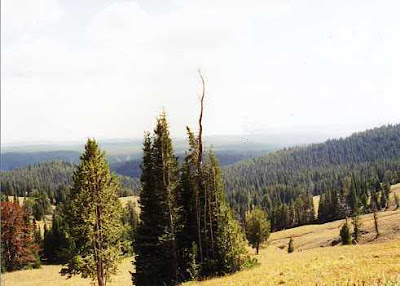 Hayfield in July
Hayfield in JulyRecently I was out scouting for good places to paint and came upon this newly mown hayfield in northern Washington County. Minnesota is gorgeous at this time of year. The day was sunny and it was later in the afternoon--perfect to begin to see the landscape defined by the shadows.
I made some quick thumbnail sketches (below). It is important to establish some abstract shapes to carry the painting and I also needed to decide how best to convey the sweep of the vista and yet zero in on the really interesting roll of the nearby fields. Thumbnails are invaluable to help establish the masses and format for a painting. Without some good "bones" it is pointless to continue. Get those established and you have a fighting chance to get a good painting.
 The masses of trees on the left were so interesting and they swept nicely into the trees on the ridgeline. All together they made a nice shape that hung together as a single mass.
The masses of trees on the left were so interesting and they swept nicely into the trees on the ridgeline. All together they made a nice shape that hung together as a single mass.The sun was blistering hot by the time I finished the block in of the pastel. Maybe that is why the orange I chose for the closest part of the field seemed to be an appropriate color to use. I decided to stop and leave the piece with just a few layers of pastel. At this point I needed my umbrella and had not brought it. My wide brimmed staw hat was just not giving me enough protection. More work on the piece would have to wait for a return trip to the site or another day in the studio.
However, the sketches and block in make my favorite point: values and good shapes give you a darned good start.











